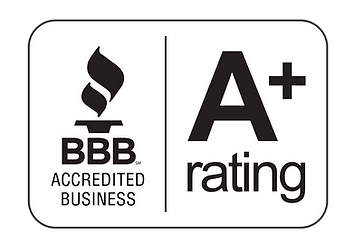HOW STRUCTURED SETTLEMENTS COMPARE
at the Interection of Settlement Money, Time, Risk Tolerance and Emotions
How Structured Settlements Compare
Structured settlements are primarily used to provide stable continuous income and to address longevity risk, however, financial planners, financial advisers, other Investment representatives, plaintiff attorneys or even plaintiffs themselves occasionally raise questions about the rate of return on structured settlement annuities compared to other investment alternatives, such as equities. It is important to keep in mind that structured settlement payments when payable as damages on account of a personal physical injury, physical sickness, wrongful death, workers compensation, or wrongful incarceration, subject to exclusions set forth in IRC §104(a)(1), IRC §104(a)(2), or IRC §139F, are totally income tax free.
On the other hand the investment return on a cash settlement and outside of a structured settlement, will generally be taxable as to income, capital gains, or possibly both.
Non qualified structured settlements offer tax deferral opportunities for lawyers and their clients settling legal cases with taxable damages.
What if I just took a lump sum and invested it myself instead of a structured settlement?
When people are going through financial transitions, the personal side tends to dominate the technical side. Trying to time the market consistently is quite difficult. Investments take discipline to ride the ups and downs and the wiggles and waggles. Not everyone can tolerate volatility, especially if the settlement is all they have and they are acutely aware of what (or who) they lost and had to go through {and fight for) to reach a settlement. If an investor's emotions come into play, will they stay in an investment, or will they get off the ride?
J.P.Morgan Annual Study Proves Market Timing Is Not Easy
The results of a 2025 study by J.P. Morgan covering a 20-year period ending December 31, 2024, demonstrate what the result might have been if you missed the best trading days, which suggests that over the same time frame you might have done better or been been highly competitive with an allocation to a structured settlement, without enduring the market risk or volatility.
| If you stayed invested in the S&P 500 index for all trading days from January 3, 2005-December 31, 2024 | 10.4% |
| If you missed the 10 best trading days from 2005-2024 | 6.1% |
| If you missed the 20 best trading days from 2005-2024 | 3.5% |
| If you missed the 30 best trading days from 2005-2024 | 1.3% |
| If you missed the 40 best trading days from 2005-2024 | -0.6% |
| If you missed the 50 best trading days from 2005-2024 | -2.2% |
| If you missed the 60 best trading days from 2005-2024 | -3.7% |
Source: JP Morgan Asset Management 2025 Guide to Retirement (as published March 2025) Impact of Being Out of the Market p40
The income generated by investment of a large cash lump sum settlement could subject the plaintiff to higher tax brackets. Therefore, considering federal and state taxes and your tax bracket, you would need to earn greater rates each and every year throughout a lifetime (or the term of the structured settlement if not a lifetime or life contingent annuity) to equal the same rate of return as the structured settlement on a net after-tax basis. The number that you need to earn on a taxable basis to equal the internal rate of return on the structured settlement payments is sometimes referred to as the taxable equivalent yield " or " taxable equivalent internal rate of return"
State Earnings Average Tax Rate
New York $1,000,000 42.7%
New York $750,000 41.6%
California $1,000,000 46.8%
California $750,000 45.2%
California $250,000 36.4%
Connecticut $500,000 38.9%
Connecticut $250,000 33.8%
Hawaii $750,000 45.1%
Oregon $750,000 44.5%
Texas $750,000 34.9%
Washington $750,000 34.9%
Average tax rate takes into account Federal and State Income Tax, Social Security and Medicare Tax Source : Neuvoo
Some New York municipalities, such as the the City of New York and City of Yonkers, charge income taxes, Certain cities in Alabama, Arkansas, Colorado, Delaware Indiana, Iowa, Kentucky, Maryland, Michigan, Missouri, New Jersey, New York, Ohio, Oregon and Pennsylvania states charge income tax on their residents. For more details see What Is Local Tax? States with Local Income Taxes in 2024 (mosey.com)
If the plaintiff has health considerations, significant future medicals, but uncertain mortality, "rated age" structured settlement annuities with a deferred start date could function as a "backstop," and could produce a higher taxable equivalent rate of return.
Hindsight is 20/20. But just the same, the 10 Year Treasury yield ranged, in 2004, from 4.15% to open January 2004 to about 4.27% on December 1, 2004. The 20-year Treasury ranged from 5.01% January 1, 2004 to 4.88% on December 1, 2004.
Source: Multpl.com. The Internal Rate of Return on structured settlement annuities was higher than those range numbers.
Liquidity can be provided by pairing the structured settlement with a settlement preservation trust, settlement protection trust, settlement management trust, or a special needs trust if there is a need to protect benefits. The use of a "structured settlement annuity backstop" is a strategy that facilitates a greater cash component and greater liquidity.
Structured Settlements Compared to Bonds
Unlike many bonds, structured settlements are not callable and can therefore be designed for reliable longer payouts. Structured settlements are not only for long term payouts. See Tangible Benefits of Structured Settlements Part 1 | Short Term Structured Settlements
Caution Concerning Factored Structured Settlement Payment Streams Mislabeled and Marketed to Investors , including Tort Victims and Lawyers , as “Secondary Market Annuities”, “SMA” or “SMIA”
An investment in structured settlement payment rights, is not the same as buying an annuity. Such investors are beingnot being sold annuities. Investors in such cases are being sold structured settlement receivables. The purchase contract is known as a Receivables Purchase Agreement {"RPA").
Avoid being fooled into thinking that it is an annuity because the person soliciting you to invest in the receivables to you has an insurance license, is a trusted settlement planner or financial planner, who sells other annuities, calls structured settlement receivables (factored structured settlement payment streams) annuities.
A "Secondary Market Annuity" is not an annuity
In its Statutory Issue Paper 160, the National Association of Insurance Commissioners (NAIC), which includes every state insurance commissioner in the United States, expressly stated in Footnote 1: "This guidance is specific to acquired structured settlement income streams (legal right to receive future payments from a structured settlement) and does not capture accounting and reporting guidance for the acquisition of any insurance product (e.g., life settlement, annuities, etc.)" and Footnote 2: "Reporting entities that hold qualifying structured settlement payment rights shall report the security on Schedule BA either as an “any other class of asset”. In some case insurance companies are institutional buyers of factored structured settlement payment streams.
What investors are sold does not qualify under the definition of annuity that can be found under the insurance laws of many states. An investor is not paying a premium.
Using the term "annuity" to sell you structured settlement receivables is improper terminology
Annuity rights do not transfer in a structured settlement factoring transaction. only the payment rights.
In Western United Life Assurance Company v. Hayden , 64 F.3d 833 (3rd Cir. 1995), then-Judge (later U.S. Supreme Court Justice) Samuel Alito, on behalf of the Third Circuit Court of Appeals, repeatedly pointed to the difference between rights that a payee has to future payments under a settlement agreement and the lack of rights of a payee under an annuity purchased by the obligor to fund such payments.
When structured settlement receivables are sold to investors, they are no longer an insurance product. It is not issued by an insurance company. It is an instrument that comes about in a structured settlement factoring transaction. It carries transactional risks that are much greater than a legitimate annuity.
80% of US states have amended statutory protections that expressly exclude investors in acquired structured settlement payment rights (structured settlement receivables), regardless of whether the structured settlement payment rights were acquired before or after the State adoped the 2017 Revisions to the Life & Health Guaranty Associations Model Act (#520).
It would not be unreasonable to seriously question why a settlement planner or financial planner is not being truthful with you and represents the product they are selling to you as an annuity, when it is not an annuity.
Structured Settlement Annuities
Are Regulated Insurance Products
Structured settlement annuities are regulated insurance products sold by licensed and appointed insurance agents, or brokers. Structured settlement payments are contractually guaranteed through customized (bespoke) structured settlement annuities that we place with a multi-billion dollar life insurance company (or companies). If you have any doubts and think you can do better with your investments while minimizing risk, consider "Monte Carlo simulation" as an effective means to illustrate (to attorneys or plaintiffs) the volatility of investment returns with certain hypothetical investment mixes (on settlement proceeds) against the amount and timing of the plaintiff's absolute needs. It may be helpful to you.
Notes:
Last updated March 3, 2025
*S&P 500 data is unmanaged, reflects the reinvestment of dividends and capital gains, bears no management fees or operating expenses and is not available for direct investment.

Let's Talk Money, Space and Time!
Have questions about FOGI (Fear of Getting in) or FOMO (Fear of Missing Out)? I'm here to help. Send a message. or Call me at 888-325-8640.





